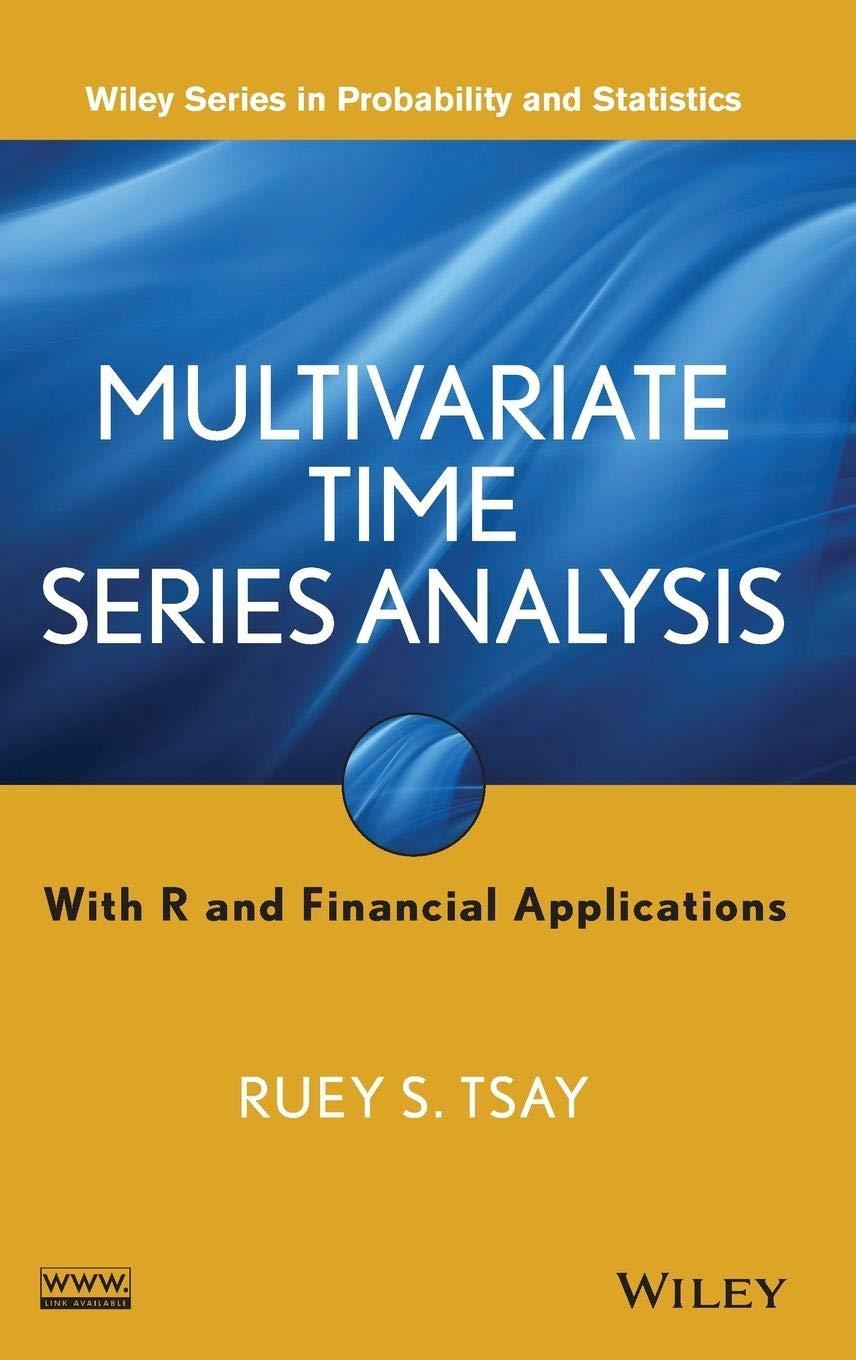Consider the bivariate VMA(1) model [ boldsymbol{z}_{t}=boldsymbol{a}_{t}-left[begin{array}{rr} -0.3 & 0.2 1.1 & 0.6 end{array} ight] boldsymbol{a}_{t-1} ]
Question:
Consider the bivariate VMA(1) model
\[ \boldsymbol{z}_{t}=\boldsymbol{a}_{t}-\left[\begin{array}{rr} -0.3 & 0.2 \\1.1 & 0.6 \end{array}\right] \boldsymbol{a}_{t-1} \]
where \(a_{t}\) is a Gaussian white noise series with mean zero and identity covariance matrix.
(a) Generate 300 observations from the VMA(1) model. Fit the VMA(1) model by both the conditional and exact likelihood methods. Write down the fitted models.
(b) To gain insight into VMA modeling, conduct a simulation study using the given VMA(1) model with sample size \(T=300\) and 1000 iterations. For each iteration, fit the VMA(1) model via the conditional maximum likelihood method and compute the Portmanteau statistic \(Q_{2}(5)\) of the residuals. Store the coefficient estimate \(\hat{\boldsymbol{\theta}}_{1}\) and the \(Q_{2}(5)\) statistic over the 1000 iterations. Compute the sample means, standard errors, and the 2.5th and 97.5th percentiles of each parameter estimate and the \(Q_{2}(5)\) statistic. Compare the summary statistics with their asymptotic counterparts.
Step by Step Answer:






